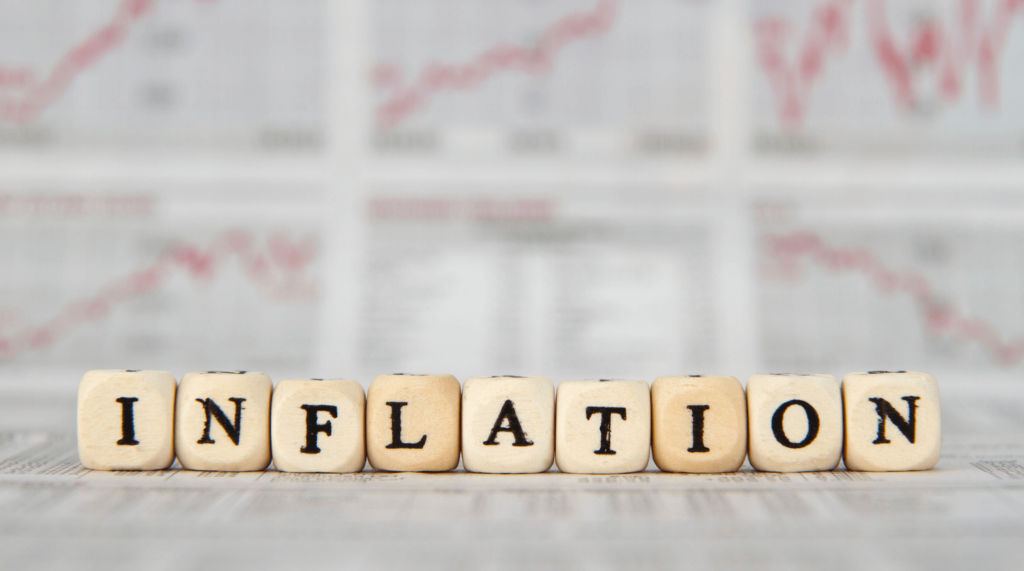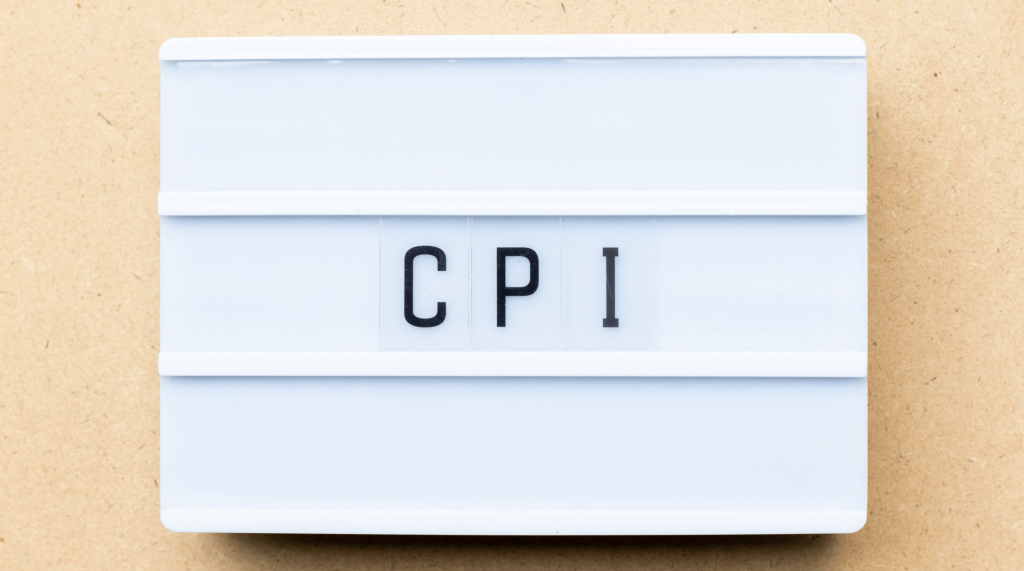Inflation explained and how it affects Aussie consumers.

Inflation is a term that is often used when we talk about contexts of economics and finance, and it refers to the rate at which the general price level of goods and services in an economy is increasing. It’s a key economic indicator that helps us understand how healthy an economy really is, and it has a direct impact on the purchasing power of consumers.
In this article, we’ll explore how inflation works in the Australian consumer market, what factors contribute to its fluctuations and tips to avoid negative impacts.
What is Consumer Price Index (CPI)?

The Consumer Price Index (CPI) is a measure of inflation that is commonly used in Australia.
How is it calculated?
It is calculated by tracking the prices of a basket of goods and services that are typically purchased by households, such as food, clothing, housing, transportation, and medical care. The CPI is calculated by comparing the prices of these goods and services over time, and then expressing the change as a percentage.
Types of inflation:
Demand-Pull inflation
One of the key drivers of inflation is the supply and demand for goods and services.
When the demand for a particular product or service increases, and there is limited supply, the price of that product or service will typically rise.
Demand > Supply: Inflation increases
Conversely, if demand for a product or service decreases, or there is an oversupply, the price will fall.
Demand < Supply: Inflation decreases
For example, if there is a drought that reduces the supply of wheat, the price of wheat-based products such as bread and pasta will likely rise. Similarly, if there is a decrease in demand for property, the price of housing may decrease.
Cost-Push inflation
Another factor that contributes to inflation is the cost of production. When the cost of producing goods and services increases, businesses may pass on this increase in price to consumers.
Production Cost = Consumer Prices = Inflation
Wage-Growth inflation
Similar to Cost-Push inflation, due to the rising living cost, employees may start asking employers for a pay increase. If employers fail to keep their wages competitive, they could end up with shortage of labour.
Wages are part of production costs which means businesses would likely pass on this increase to the consumer in the form of higher prices.
What impacts the cost of production?

This can occur due to a variety of factors such as rising energy costs, labour costs, or material costs. An example we have seen over the last few months is, if the price of oil increases, the cost of producing and transporting goods will likely increase, and businesses may need to raise prices in order to maintain their profit margins.
How does the government influence the inflation rate?
In addition to these factors, inflation can also be influenced by government policies such as monetary policy and fiscal policy. Monetary policy refers to the actions taken by a central bank, such as the Reserve Bank of Australia, to manage the money supply and interest rates.
By adjusting interest rates, the Reserve Bank can influence the amount of money in circulation and the cost of borrowing. This, in turn, can affect the demand for goods and services and the rate of inflation.
Fiscal policy, on the other hand, refers to the government’s spending and taxation policies. When the government spends more money than it collects in taxes, it creates a budget deficit. This can lead to inflation if the government needs to print more money to cover its expenses. Similarly, if the government raises taxes too much, it can reduce consumer spending and slow down economic growth, which can also impact inflation.
How does inflation affect consumers in Australia?
When prices are rising, consumers may need to spend more money to purchase the same goods and services. This can reduce the purchasing power of consumers and make it harder to afford basic necessities. Inflation can also impact the value of savings and investments. For example, if inflation is higher than the interest rate on a savings account, the real value of the savings will decrease over time.
However, it’s important to note that not all inflation is bad. In fact, a certain level of inflation is necessary for a healthy economy. It encourages businesses to invest and innovate, and it can help to stimulate economic growth. The Reserve Bank of Australia has a target inflation rate of 2-3% per year, which is considered to be a healthy level of inflation, which is what the RBA is currently tackling and increasing the cash rate to achieve.
How does inflation affect your mortgage?
Inflation can have a significant impact on mortgage repayments and home loans in several ways:
- Increase in Interest Rates: When inflation rises, the Reserve Bank of Australia (RBA) may increase interest rates to control it. This means that banks and other lenders may also increase the interest rates they charge on mortgages and home loans. As a result, borrowers may have to pay more in interest on their loans, which can increase their monthly mortgage repayments.
- Decrease in Affordability: Inflation can also cause the cost of living to increase, which can decrease the affordability of homes. An increase in cost of living would mean you will have less income to service your home loan. As a result, many Aussie borrowers may experience financial stress to maintain their current lifestyle.
- Impact on Loan-to-Value Ratio (LVR): Rising inflation can indirectly causes property prices to reduce as borrowers are unable to borrow as much which can impact the Loan-to-Value Ratio (LVR) of your property. This means that borrower may not be able to refinance their existing home loan for a more competitive interest rate also known as a mortgage prison.
- Fixed vs Variable Interest Rates: Inflation can also impact the type of loan borrowers choose. If inflation is expected to rise significantly, borrowers may opt for a fixed-rate mortgage to lock in a lower interest rate. However, if inflation is expected to be low, borrowers may choose a variable-rate mortgage, which can offer lower interest rates in the short term.
- Default Risk: Rising interest rates a result of inflation would put borrowers at risk of defaulting on their mortgage. This will have a significant negative impact on your credit score that will impair your ability to refinance or future borrowings.
All in all, inflation can impact a range of factors that may affect your finances and household budgets. It’s essential for borrowers to consider these above factors and speak with a trusted lending advisor before taking out a mortgage or home loan.
If you’re looking for lending advice or are looking to see where you stand when it comes to borrowing power, get in touch with our expert brokers at Rateseeker and we can help guide you and determine which loan is most suitable for your circumstances.
So, what can consumers do to protect themselves from the negative effects of inflation?

Inflation can have negative effects on consumers by reducing their purchasing power and making the goods and services they rely on more expensive. Below we explore some key ways that consumers can protect themselves from the negative effects of inflation:
- Invest in assets that appreciate in value: One way to protect against inflation is to invest in assets that appreciate in value over time, such as stocks, real estate, or precious metals. These investments tend to keep pace with inflation and can help preserve purchasing power.
- Maintain a diversified portfolio: Diversifying your investments across multiple asset classes can help reduce risk and increase your chances of generating positive returns. This means spreading investments across stocks, bonds, real estate, and other assets, rather than putting all your money into one type of investment.
- Review Living expenses: By reviewing any discretionary expenses, you can identify areas that you can temporarily stop spending on and save. This increases your propensity to save and can protect yourself against the rising cost of goods and services.
- Shop around for the best deals: Inflation can lead to price increases for many goods and services, but not all prices will rise equally. By shopping around for the best deals, you can often find ways to save money on the items you need.
- Be careful with debt: Debt can become more expensive during times of inflation, as interest rates tend to rise. If you have debt, try to pay it off as quickly as possible, and avoid taking on new debt unless it’s necessary.
- Consider investing in inflation-protected securities (eTIB): Inflation-protected securities, such as Treasury Inflation-Protected Securities (TIPS), are specifically designed to protect against inflation. These securities adjust their value to keep pace with inflation, which can help maintain purchasing power over time.
As a smart homebuyer, by taking steps to diversify investments, save money, shop around, be cautious with debt, and consider investing in inflation-protected securities, everyday Aussies can help protect themselves from the downsides of increasing inflation.
If you’re a homeowner and feeling the crunch as interest rates rise, it may be time to give your home loan a health-check to see if you’re getting the best value out of your loan. At Rateseeker we’re experts in the refinancing game, and our mission is to lock down the sharpest rates for our clients who are looking to save big in the long-term. Get in touch with our team of expert brokers with a free no-obligation chat today.
** General Advice Warning
The information provided on this website is general in nature only and it does not take into account your personal needs or circumstances into consideration. Before acting on any advice, you should consider whether the information is appropriate to your needs and where appropriate, seek professional advice in relation to legal, financial, taxation, mortgage or other advice.




